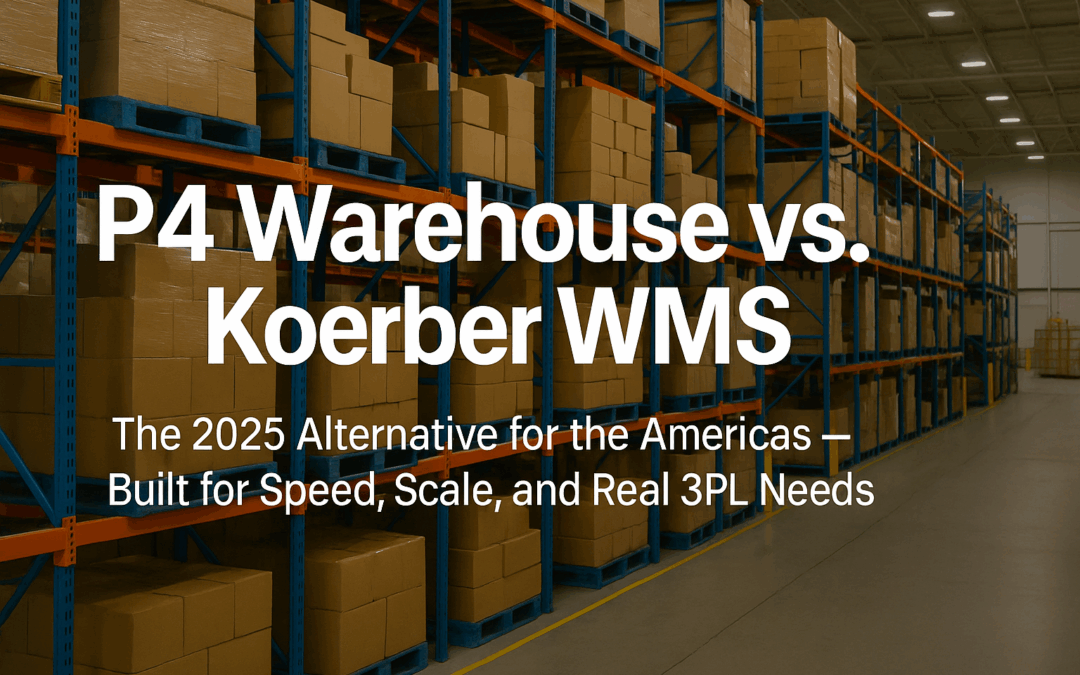
Native 3PL billing within your WMS
No More: The Nightmare of Charging for Your Work as a 3PL
An honest conversation about why your invoicing shouldn't be your headache
If you run a 3PL, you're probably familiar with this scene: It's 9 PM on the last day of the month. Your finance team is still in the office, reconciling Excel spreadsheets. Your operations manager is frustrated because "the numbers don't add up." And you're thinking, "There has to be a better way to do this."
She has it. And we want to tell you about it.
The reality that no one wants to admit
Let's be honest: Most of us have accepted that invoicing is a necessary pain. Month after month, we do the same dance:
- Your warehouse team works hard all day
- Someone (who knows who?) exports data from the WMS
- Someone else tries to reconstruct what they did for which client
- Excel sheets fly by mail
- Customers ask, "Why did you charge me this?"
- And you start again next month
Does this sound familiar? You're not alone. And it's not your fault. It's just that traditional systems failed you.
What if I told you that every scan could be money in the bank?
Picture this: Your team scans an incoming pallet. Click. It's already registered as an incoming shipment. They move inventory to a new location. Click. Invoiced. A customer requests a special labeling service. Click. It's on their invoice.
No exporting. No rebuilding. No guessing.
That's what we do at P4 Warehouse. It's not magic; it's common sense applied to technology.
How we got here (and why it matters)
We spoke to hundreds of 3PL operators. They all had the same story: "Our WMS does the operational work well, but the invoicing... ugh."
We realized something obvious but revolutionary: The moment you create value is the moment you should be able to collect it.. Not a week later. Not after 10 reconciliations. Now.
What it really means to you and your team
For your operations team: "Finally, someone understands that every move we make has value. I no longer have to explain what we did—the system knows."
For your finance team: "I can go home on time. The bills generate themselves, and every charge is backed up. I'm no longer the villain chasing payments."
For you as a leader: "I sleep better. My cash flow has improved. My clients have more confidence because they can see exactly why they're paying what they're paying."
A real day in your new world
7:00 AM – A truck with merchandise arrives
- Your team receives and scans it.
- The system records: 50 pallets received for Client A
10:30 AM – Urgent picking order
- 200 units are picked
- The system registers the service automatically
2:00 PM – Special relabeling request
- Your team completes it
- It is already added to the customer's invoice
5:00 PM – End of the day
- Today's bill is ready (if you want to see it)
- Your team goes home stress-free
End of the month – The full invoice is auto-generated and sent to the customer, so you can focus on growing your business, not chasing payments.
The questions you probably have (and their honest answers)
"But each of my clients charges differently..." Exactly. That's why each customer has their own profile. Maria pays per pallet, Juan pays per day of storage, Rosa has a monthly minimum. You set it once, and the system remembers it forever.
"What if there's a dispute?" Here's the beauty of it: Every job has its own story. "Hey, customer, on March 15th at 2:47 PM, Jose scanned these 10 pallets in location A-15." End of discussion.
"It sounds expensive..." You know what's expensive? Paying for two systems. Paying overtime. Losing money due to billing errors. This eliminates all of that.
A true story (with names changed)
Roberto ran a mid-sized 3PL. His monthly nightmare: 7-10 days to close billing. His team hated the end of the month. His customers complained constantly.
After implementing P4 Warehouse:
- Closing in 2 days (could be less, but Roberto likes to check)
- 60% fewer disputes with customers
- Eliminated software that cost five figures a year
- Her accountant, Maria, now smiles at meetings.
But most importantly, Roberto told me, “For the first time in years, I can focus on growing my business instead of chasing payments.”
Do you want to see if this is real?
I'm not going to lie to you with empty promises. I'll make a simple proposal:
Let's have a 15-minute conversation. Bring your most complicated bill—the one that gives you a headache every month. We'll show you what it would look like in our system.
No commitment. No pressure. Just two people talking about how to make your life easier.
The time to change is now
Every month spent with the old system is money and time you don't get back. Your team deserves tools that support them, not frustrate them. Your customers deserve transparency. And you deserve to sleep soundly.
→ Let's talk for 15 minutes Not to sell you something, but to show you there's a better way.
PS – If you've made it this far, it's probably because this resonated with you. That tells me you're the kind of leader who seeks better solutions for your team. That says a lot about you.





